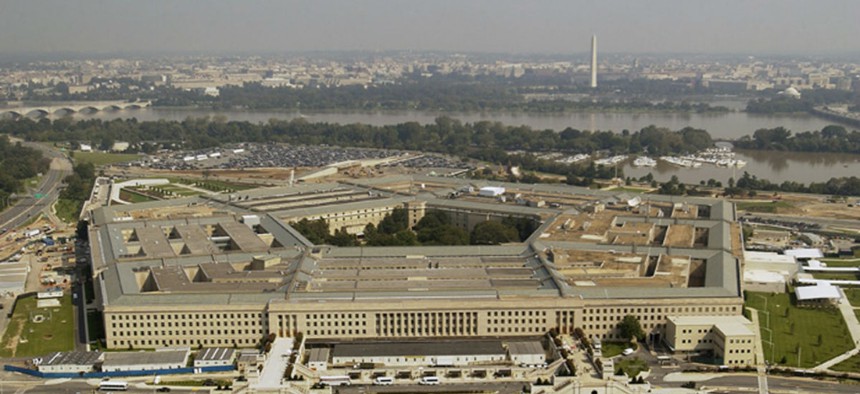
Defense Department file photo
The Pentagon Has Shed 17 Percent of Security Clearance Holders Since 2013
The Defense Department is taking longer to process clearances, however.
About 3.8 million Defense Department employees and contractors hold security clearances, a 17 percent decrease from 2013 and down 100,000 since 2014.
The reduction is part of an ongoing effort by the Obama administration to “minimize risk of access to sensitive information and reduce costs,” according to a new report on security clearance reform created by the Office of Management and Budget, the Office of the Director of National Intelligence, the Office of Personnel Management and the White House. The just-released report showed data through June 2015.
Of the 3.8 million security clearance holders at Defense, just 58 percent -- or 2.2 million -- currently have access to classified information. That ratio has ticked up only slightly since fiscal 2013, when 2.5 million of 4.6 million clearance holders were “in access” to secret data.
The administration has emphasized cutting the “no access” population, or those without access to classified information who hold security clearances, but the numbers at Defense remained stagnant through June of this year. While the number of no access clearance holders has dropped 20 percent since fiscal 2013, that entire decline occurred last year.
Some experts said there is still an abundance of fat to be cut.
“It looks to me like there is still plenty of room for further reductions,” said Steven Aftergood, director of the Federation of American Scientists Project on Government Secrecy. Aftergood added as long as there are still people with access to classified documents who do not need it, “there is some slack in the system.”
The Obama administration has also sought to reduce the number of employees and contractors holding expired clearances. Those efforts fell short in the first three quarters of fiscal 2015, with expired clearance holders at Defense actually increasing for both secret and top secret holders. Measured against the administration’s August 2014 baseline, however, the expired population has been cut by one-third, to 519,000.
The White House decided to reform the security clearance process after a 2013 tragedy at the Washington Navy Yard in which a contractor shot and killed 12 people. OMB in conjunction with OPM, ODNI, and the Homeland Security, Justice and Defense departments created a review panel in 2013 that made 13 recommendations. Some of those changes have been implemented, and clearance reduction became one of the Obama administration's cross-agency priority goals, which in turn led to the release of the new report.
“It was seen as a way to improve security while reducing costs,” Aftergood said of those efforts. The Navy Yard shooting “prompted people to say, ‘This whole system has gotten too big and it’s getting unmanageable.’ ”
Congress has proposed an array of changes, some of which have been signed into law. Reform efforts have focused on reducing the amount of classified information -- thereby reducing the size of the cleared population -- as well as boosting reinvestigation efforts.
The average time for the fastest 90 percent of reinvestigations jumped from 160 days at the end of fiscal 2014 to 236 days in the most recent data, the report showed. The administration missed its goals for average clearance processing time for secret, top secret and reinvestigations last quarter. Aftergood suggested that personnel due for reinvestigations should not go through that process until there is a determined need for those individuals to have access to classified information.
The no access population will never be cut to zero, as agencies and contractors must maintain a bench of pre-cleared employees that can be called upon to fill urgent needs.
The most recent governmentwide data show 4.5 million people held security clearances at the end of fiscal 2014, down 12 percent from one year prior.







